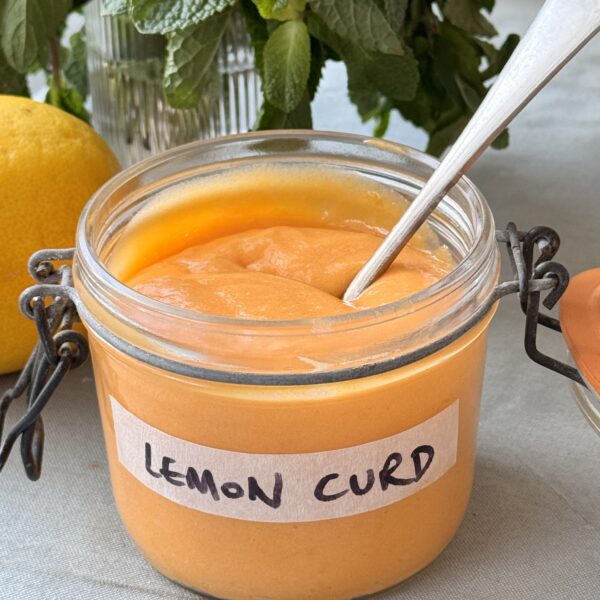Easy Lemon Curd
Tangy, creamy and delicious lemon curd is one of those kitchen classics that once you’ve mastered, you’ll never want to buy it again.
- Prep Time: 5 minutes
- Cook Time: 15 minutes
- Total Time: 20 minutes
- Yield: Makes one 300ml jar 1x
- Category: Baking
- Method: Stove
- Cuisine: English
- Diet: Vegetarian
Ingredients
- 100g caster sugar
- 2 large lemons
- 5 large egg yolks, at room temperature
- 80ml lemon juice
- 60g unsalted butter, diced
- Pinch of salt
Instructions
- In a large heat-proof glass or ceramic bowl, mix together the sugar and lemon zest using your fingertips. Rub together until clumpy and totally mixed. Using your fingertips to mix together the sugar and lemon zest releases the citrus oil that is held in the zest which makes it even more lemony. Add the egg yolks and, using a rubber spatula or silicone whisk, whisk until thickened, pale and slightly foamy.
- In a large saucepan, heat the lemon juice over medium-high heat until it just comes to a boil. Remove from the heat and gradually pour over the foamy lemon-sugar egg whites, whisking constantly until all the lemon juice has been added.
- Return the lemon-egg mixture to the saucepan and cook over low heat, stirring constantly until thickened enough to coat the back of a spoon - this should take around 5 minutes. Make sure you keep it over a gentle, low heat and stir constantly - if you leave it or let it boil, you will end up with a peculiar lemon scrambled egg yolk situation (not what we are looking for!).
- Once it has thickened, remove from the heat and gradually add the butter and a pinch of salt. Stirring to ensure it is fully melted and incorporated. Strain through a fine sieve (optional) then pour into a jar and leave to cool completely before covering and chilling in the fridge.
Notes
Scroll up for an easy step by step guide on how to make lemon curd.
To store: The lemon curd can be stored in the fridge for up to 1 week.
To freeze: You can freeze the lemon curd for up to 1 month. Defrost fully in the fridge before using.
Metal-free equipment: when making the lemon curd, try to avoid using metal kitchen equipment. I find it gives the lemon curd an odd metallic taste. Use a glass or ceramic bowl and a plastic/silicon spatula or whisk. Use a cast iron or enamel pan.
Gentle heat: make sure you keep the curd over a gentle heat and whisk constantly. Otherwise, you will end up with lemon scrambled eggs!
Straining the curd: optional but I like to strain the curd through a sieve once done to make sure it’s really silky smooth. If you have a plastic mesh sieve, this is ideal over a metal one.
Covering: If chilling in the bowl until later for a separate recipe, cover with clingfilm directly on the surface of the curd. This stops any skin forming over the top of the curd which can make it lumpy (although doesn’t spoil the taste, it’s still delicious!)
Find it online: https://desertislanddishes.co/easy-lemon-curd/
